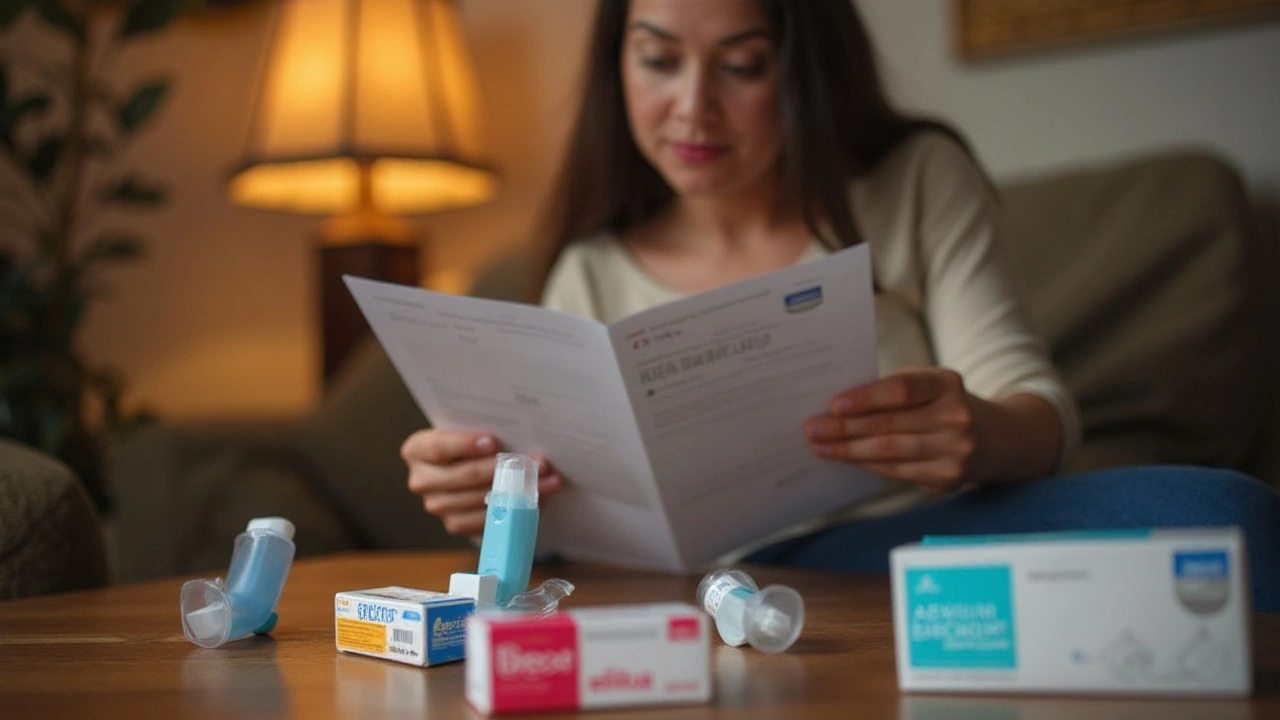Asthma treatment: practical options and when to act
Having asthma means learning a few reliable tools that actually work. You want quick relief when symptoms hit, steady control to reduce attacks, and a simple plan so you know when to call your doctor or go to the ER. Below you’ll find clear, no-nonsense steps and medicine options most people use today.
Quick relief: rescue inhalers and what to do during an attack
Rescue inhalers (usually albuterol) are your first line when breathing gets tight. Use 2 puffs through a spacer and wait a few minutes—if you’re still wheezing, repeat once. If symptoms don’t improve after these steps or you can’t speak more than short phrases, get emergency care. Carry the inhaler with you and check its expiry and dose counter regularly.
For children, teach them how to use a spacer with a mask if they can’t coordinate inhaler and breath. Adults should practice quick, full breaths with their inhaler so medicine reaches the lungs, not the throat.
Long-term control: daily medicines and lifestyle habits
Daily control focuses on cutting inflammation and preventing attacks. Common options: inhaled corticosteroids (ICS) to reduce inflammation, long-acting beta-agonists (LABA) combined with ICS for added control, leukotriene modifiers (like montelukast) for some people, and biologic injections for severe allergic or eosinophilic asthma. Your doctor will match the plan to how often you have symptoms.
Don’t skip daily meds—even when you feel fine. Asthma can worsen fast if inflammation builds up unnoticed. Check-ups every 3–12 months help adjust doses and test lung function with spirometry or peak flow meters.
Small changes outside meds matter. Identify and avoid triggers: smoke, strong smells, cold air, dust mites, pet dander, and mold. Get a yearly flu shot and follow COVID guidance if relevant—respiratory infections often spark attacks. Keep an action plan written down: which medicines to take daily, how to handle worsening symptoms, and emergency steps with clear thresholds (like peak flow readings).
When pills are used: oral steroids are effective for short flare-ups but aren’t a long-term solution due to side effects. Antibiotics aren’t routine unless there’s a clear bacterial infection. For persistent, severe asthma that doesn’t respond to standard treatments, biologic therapies may cut attacks and steroid need—ask a specialist if you qualify.
Finally, practice the basics: learn proper inhaler technique, use a spacer if needed, track symptoms or peak flow at home, and keep regular doctor visits. With the right combo of relief medicine, daily control, trigger management, and a clear action plan, most people can cut attacks and breathe easier every day.

10 Effective Alternatives to Symbicort for Asthma and COPD Management
Discover the top 10 alternatives to Symbicort for managing asthma and COPD. This article provides detailed information on various inhalers and medications, such as Advair Diskus, Breo Ellipta, and Dulera, highlighting their effectiveness, pros, and cons. Understand the different options available to help you make informed decisions about your treatment plan.
